I Am Your Baby
I grow best with love and the right food.
- I need human milk or formula with iron until I turn one. I can continue breastfeeding until 2 years or beyond.
- I know when I am hungry or full. I let you know by the way I act. Please feed me when I act hungry. Let me eat until I am full.
- I may have a growth spurt around 6 months and want to nurse more often or longer.
- I am growing fast. If I take human milk or formula from a bottle, there might be times I drink more than 4 ounces at a feeding.
- When I am about 6 months old, help me learn how to drink from a cup. Offer a cup with human milk, formula, or water at meals and snacks.
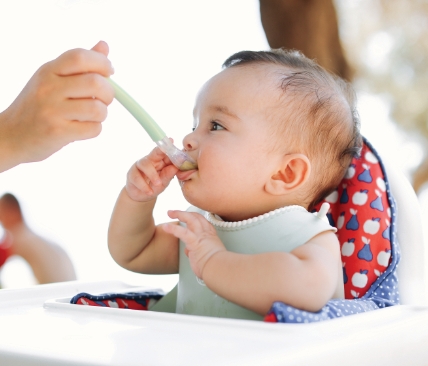
With Your Help I’ll Learn to Eat Foods
When I’m about 6 months old, I can start to eat solid foods. Please go slowly.
If our family has allergies or I was born early, talk to my healthcare provider or WIC before I start solid foods.
Be Sure I’m Ready
To eat solid foods, I must be able to:
- Sit up and hold my head steady.
- Grab objects and bring them to my mouth.
- Show I want food by opening my mouth or taking it from a spoon.
- Swallow food rather than push them back out.
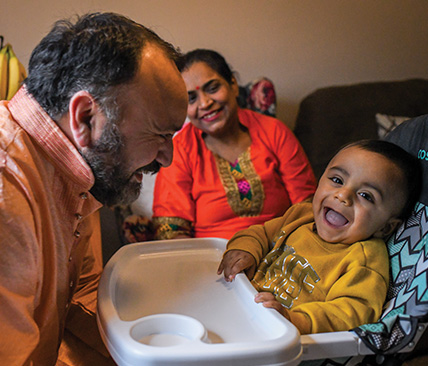
I Will Go Through 4 Stages of Foods:
1
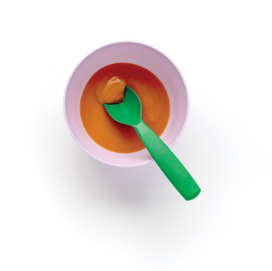
2
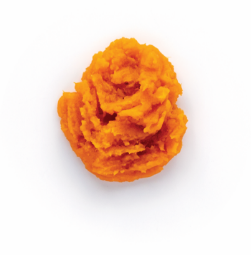
3
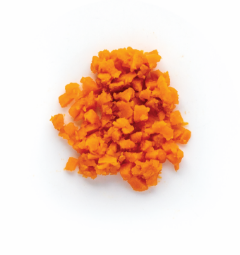
4
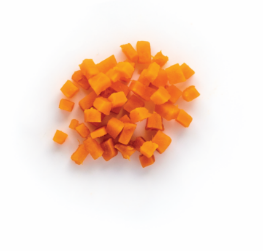
Textures of Foods

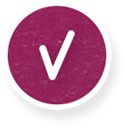
Baby food puree on
pre-loaded spoon


Avocado strips rolled
in ground seeds


Whole grain toast sticks
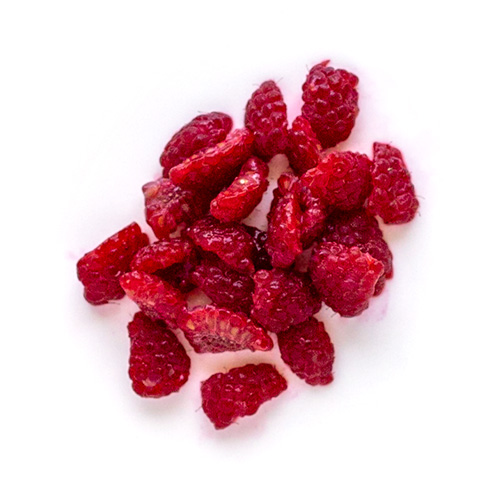

Diced raspberries
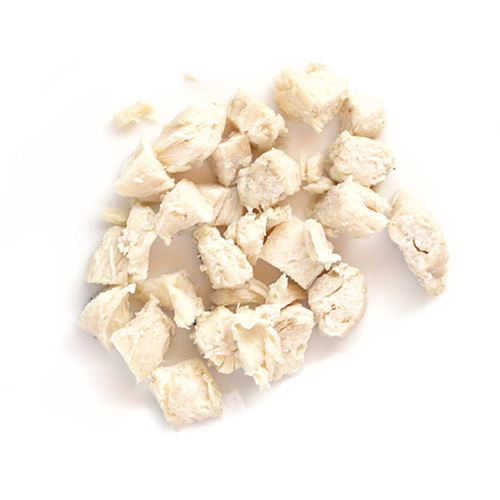

Baked, chopped chicken
Make My First Food a Single Food
- Give me only one new food at a time. This helps me adjust to new foods.
- I might eat about a teaspoon to start with and then more as I get used to eating from a spoon or picking up foods.
Wait at least 5 days before trying another new food.
- Continue to offer me a variety of foods and textures from different food groups.
- Watch for signs of food allergies like trouble breathing, throwing up, diarrhea, skin rash, or swelling. If I have a reaction to a new food, call my healthcare provider or take me to the emergency room.
I Need to Eat My Way
- I’ll open my mouth if I want more food.
- I’ll keep my mouth closed or turn my head if I don’t want more food; don’t force me to eat.
- I might spit food out or make a face. I’m learning new flavors and how to move food around in my mouth.
- If I don’t like something, wait a week and let me try it again. I might need to try a new food 10 or more times before I like it!
- I’ll get food on my hands, face, and in my hair. Try not to stress about the mess. Be proud of me as I learn to eat.
- Let me feed myself with my hands or a spoon. I use my jaw to mash food and my tongue and fingers to move it in my mouth.
- Eat with me at our family meals. I eat better when you are with me. Let’s turn the TV and cell phone off so we can talk.
Let Me Eat Food With My Fingers

Palmer Grasp
At around 6 months of age, I can hold food in my palm and bring it to my mouth. Try giving me soft foods in long strips, about the size of your finger.

Pincer Grasp
At around 8 or 9 months, I will learn how to pick foods up with my index finger and thumb. Try offering small pieces of food no bigger than your thumbnail that can easily be smashed.
- Cooked pieces of vegetables or soft fruits
- Pieces of cooked meats, chicken, eggs, beans, or tofu
- Chopped noodles or rice
- Strips of toast, soft tortillas, or plain crackers
How much should I eat?
Here are some ideas:
6 - 8 Months
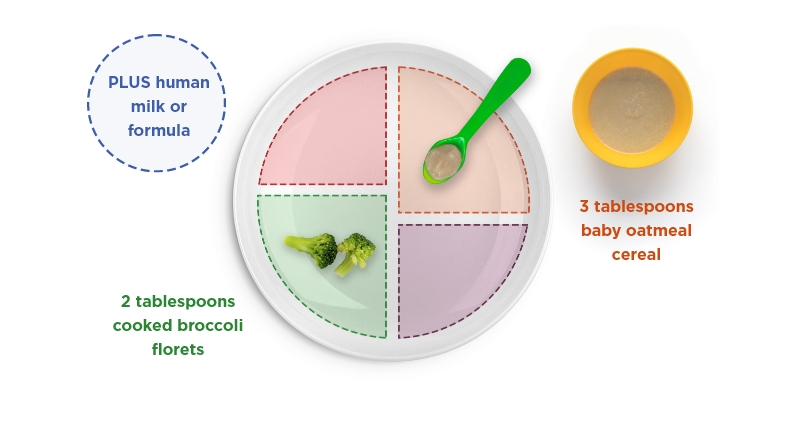
8 - 10 Months
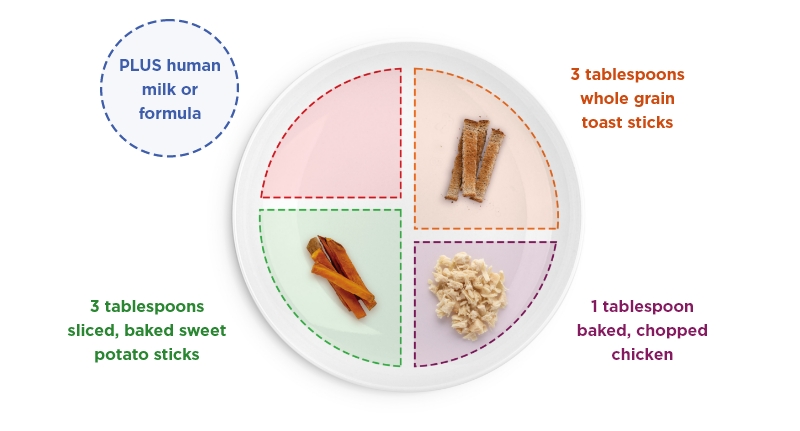
10 - 12 Months
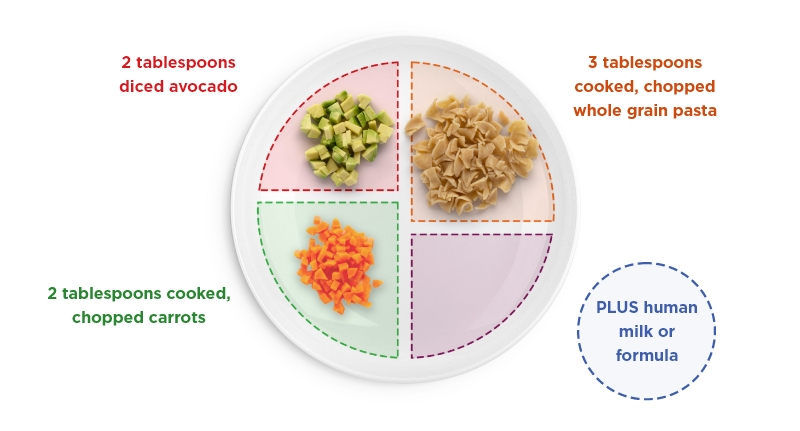
Let me eat until I show signs I’m full. I might close my lips, turn or shake my head, or raise my arm. Ask me if I’m full. Then, let me stop eating if I want to.
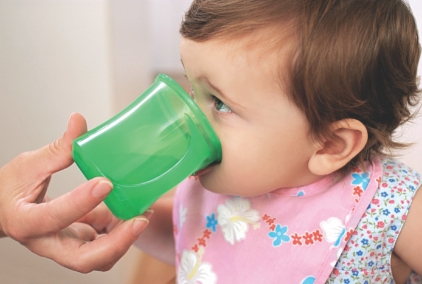
Time for a Cup
When I turn 6 months old, you can give me a small amount of water (up to 4-8 oz. per day) as I learn to drink from a cup.
You can also offer human milk or formula in the cup. I do not need any other beverages, such as juice, for my age.
Food Safety
- We need to wash our hands together before making food or eating.
- Put pureed foods on a spoon and allow me to pick it up.
- Make sure my food is cooked thoroughly and has cooled down before giving it to me.
- Don’t heat my food in a microwave. It could burn my mouth.
Introducing Peanut Butter
After I have tried other solid foods, introduce me to peanut butter. Doing this can be helpful if our family has food or egg related allergies, like eczema or other skin issues.
Spread a small, thin smear of peanut butter thinly on a cracker or mix it with applesauce and offer it on a spoon. Watch me for the next 2 hours to make sure I don’t have a reaction.

Foods To Avoid
I need food that is right for my age and will help me grow best.
I don’t need added sugars, salt, fat, or additives. Wait to offer juice until I am at least 12 months old.
Don’t give me foods I can choke on, like:
- Raw vegetables
- Bacon
- Whole grapes
- Whole cherry tomatoes
- Fish with bones
- Potato, corn, or tortilla chips
- Popcorn
- Hard candy
- Nuts
- Hot dogs
- Meat sticks
Also, please don’t give me foods that could make me sick, like:
- Cow's milk or other non-dairy milks like soy or almond milk. These milks do not have enough of the nutrients I need to grow and develop before my first birthday.
- Rare or raw meats
- Honey or food made with it. Honey sometimes contains bacteria (Clostridium Botulinum) that can make babies sick. I shouldn’t have honey until I’m at least 12 months of age.
Play with me!
Put me on a blanket on the floor. Put a toy just out of my reach so I can move to get it. Roll a ball to me. Hold both my hands and let me walk with you.
Look what I can do!
I love to learn from you. Read to me. Sing a song. Let’s play games like peek-a-boo. Take me for a walk and show me new things. I’m active — keep an eye on me!
I can sit up and roll over. I’ll start to creep and crawl. I like to shake things and drop them to see what happens.
I like to use my hands. I can hold my cup. I like to point and wave bye-bye. I say da-da and ma-ma. I can pull myself up to stand.
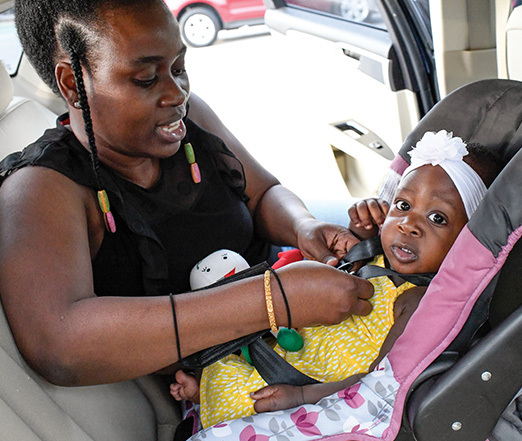
Keep me safe and healthy
- I need check-ups and shots to stay healthy. I should visit my healthcare provider at 6 months, 9 months, and 1 year of age.
- Clean my gums and teeth with a clean, wet, soft cloth after I eat. Ask the dentist if I need fluoride.
- If other people feed me, be sure to ask what and how much I eat.
- Never put me to bed with a bottle. I could choke, get an earache, or damage my teeth.
- Let me explore and learn. See each room like I will, from the floor, and make it safe for me.
- Buckle me into an infant car seat before we ride in a car. It’s the law! Install my seat in the car’s back seat, rear-facing.
- Keep me away from cigarette, tobacco, vaping and all other smoke. Smoke hurts my lungs and can make me sick.
- Avoid tobacco or nicotine products, alcohol, marijuana, and other illegal drug use to keep our family healthy and safe. For support with quitting tobacco or nicotine products visit www.quitnow.net. For support with quitting alcohol or other drugs visit www.findtreatment.gov. Your WIC Nutritionist can also provide additional resources.